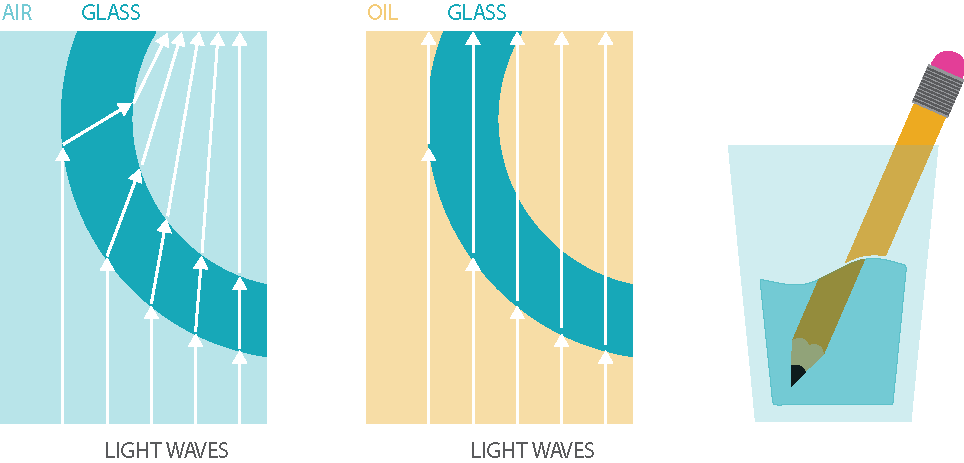Watch the test tubes disappear!
How it works
Light travels at different speeds through different substances. This change in speeds causes light to refract (bend). When two substances have the same index of refraction, light passes through it at the exact same speed and our eyes cannot tell the difference between them.

Try this at home
-
Try putting a pencil or a spoon in a glass of water, and look at it from different angles. Do you see refraction occurring?
- What happens when you put the pencil in different liquids? Do they all have the same index of refraction?
Definitions/glossary
-
Physics: the study of forces, matter, motion, and energy
-
Refraction: when light bends or changes direction when it passes through substances of different densities
- Index of Refraction: describes how light travels through different substances/mediums
What's going on in Waterloo
At the Perimeter Institute for Theoretical Physics, scientists are looking for answers about our universe; from the very largest to the very smallest. Sometimes the simplest questions lead us to the most profound insights!
How to become a physicist
The first step to becoming a physics student is to graduate from high school with the required math, science, and english courses. After high school, you will attend a post-secondary program. Physics students at Waterloo explore, investigate, and discover the natural laws and processes of non-living matter.